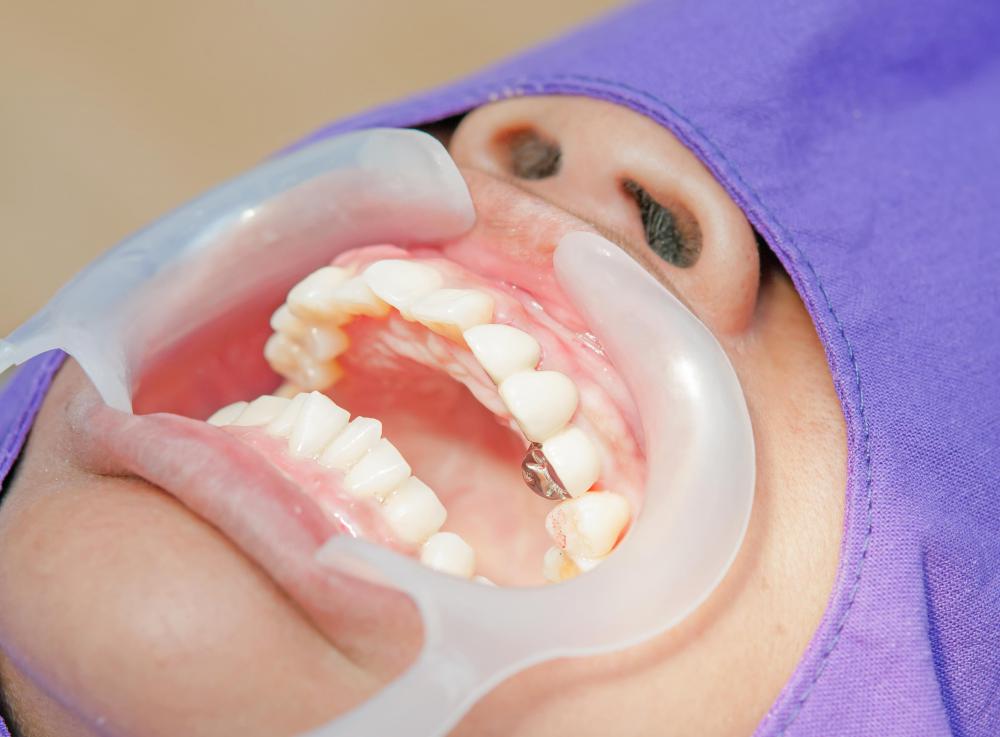At WiseGEEK, we're committed to delivering accurate, trustworthy information. Our expert-authored content is rigorously fact-checked and sourced from credible authorities. Discover how we uphold the highest standards in providing you with reliable knowledge.
What Is a Gracey Curette?
A curette is a small surgical tool, or instrument, that is used for slicing or scraping tissues to be later diagnosed for disease. The end of the tool has a variety of tips including scoops, gouges and hook devices. The Gracey curette is used during oral surgery and only has one side that is slightly sharpened for scraping purposes. There are a number of Gracey curettes for different teeth and positions. These include both distal and mesial directions within the mouth.
Distal refers to the area and teeth that are furthest from the front and middle teeth. Mesial refers to the teeth and position nearest the median line of the face. For instance, an incisor tooth is said to be medial to a molar, but an individual tooth also has a medial and distal side. Gracey curettes are specific to each particular site and include a posterior mesial curette, a posterior distal curette, as well as an anterior curette. Posterior refers to the teeth located towards the back of the mouth behind the cuspids. Anterior refers to the teeth toward the front of the mouth.

Developed by Dr. Clayton Gracey in the 1930s, the Gracey curettes can remove plaque and diseased oral tissue from beneath the gum line, or subgingival region. Each Gracey curette is specifically designed to reach a different tooth or area of the mouth with relative ease. They are particularly helpful with scaling and periodontal therapy, or root planing. Both of these are procedures for thoroughly cleaning the teeth, and involve cleaning deeply between the teeth and under part of the gums up to teeth's roots. The curette stems are able to be calibrated and manipulated to reach areas in the mouth that are difficult to access. The more bends in the curette, the further back into the mouth it can reach.

Each Gracey curette has a different number. This refers to the tooth and area designation of each curette’s focus. Dentists and dental hygienists are able to use the curettes to accurately pinpoint areas and exact depths of subgingival deposits and decay. This can be accomplished without the dentist having to change instruments as the Gracey curette has the ability to probe the teeth and gums with great accuracy. Once the area has been root planed, the curette is then able to take another measurement of the pocket depth.

The instruments are held similarly to a pen or pencil and pressure is applied when the curette is being used to plane or scale. The tips of the curettes are each shaped differently, but the majority are slightly rounded so as not to cut into the gums. Some curettes will be sharper than others so that they are able to reach deeper into the pockets that the more rounded curettes are unable to.
AS FEATURED ON:
AS FEATURED ON:













Discuss this Article
Post your comments